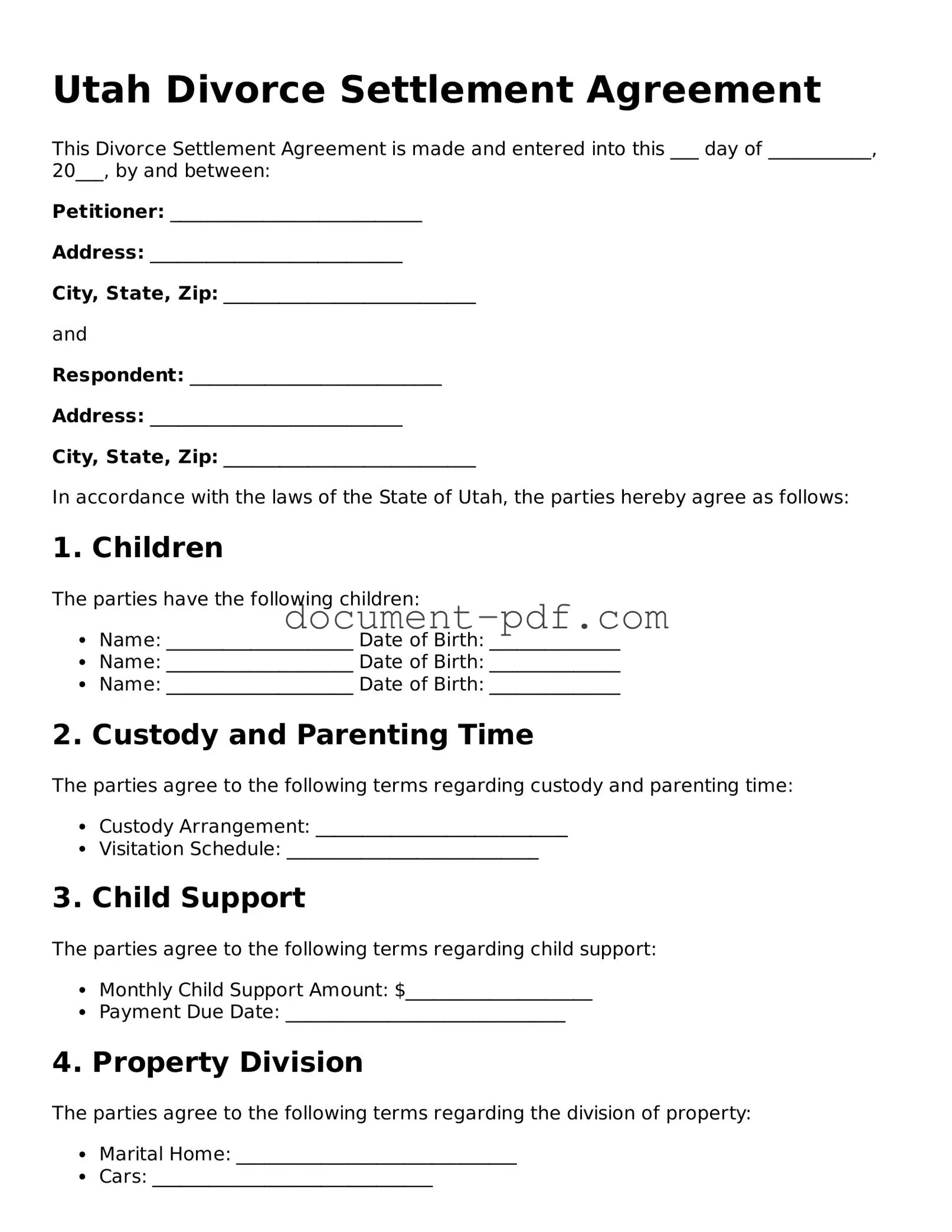Utah Divorce Settlement Agreement
This Divorce Settlement Agreement is made and entered into this ___ day of ___________, 20___, by and between:
Petitioner: ___________________________
Address: ___________________________
City, State, Zip: ___________________________
and
Respondent: ___________________________
Address: ___________________________
City, State, Zip: ___________________________
In accordance with the laws of the State of Utah, the parties hereby agree as follows:
1. Children
The parties have the following children:
- Name: ____________________ Date of Birth: ______________
- Name: ____________________ Date of Birth: ______________
- Name: ____________________ Date of Birth: ______________
2. Custody and Parenting Time
The parties agree to the following terms regarding custody and parenting time:
- Custody Arrangement: ___________________________
- Visitation Schedule: ___________________________
3. Child Support
The parties agree to the following terms regarding child support:
- Monthly Child Support Amount: $____________________
- Payment Due Date: ______________________________
4. Property Division
The parties agree to the following terms regarding the division of property:
- Marital Home: ______________________________
- Cars: ______________________________
- Other Assets: ______________________________
5. Debts
The parties agree to the following terms regarding the division of debts:
- Shared Debts: ______________________________
- Individual Debts: ______________________________
6. Spousal Support
If applicable, the parties have agreed to the following terms regarding spousal support:
- Amount: $_______________________
- Duration: ______________________________
7. Miscellaneous
This Agreement constitutes the entire understanding between the parties. Any modifications must be made in writing and signed by both parties.
By signing below, both parties acknowledge that they have read and understand this Divorce Settlement Agreement, and they agree to abide by its terms.
Petitioner: ___________________________ Date: _____________
Respondent: ___________________________ Date: _____________
This Agreement is entered into voluntarily by both parties without any duress or undue influence.
